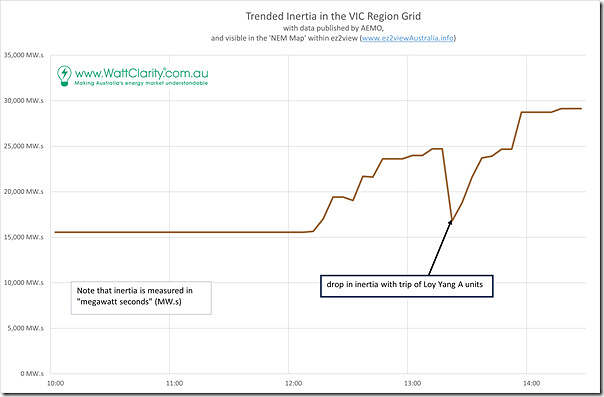Back on 20th July 2023, Jonathon Dyson wrote the article ‘Let’s talk about inertia’ as part of the process of focusing readers on an increasingly important power system parameter.
1) This is something that we’ve been highlighting in Appendix 1 in GenInsights Quarterly Updates reports … and will surely feature when we come to reviewing 2024 Q1; and
2) It’s something AEMO has been publishing at a regional level for a shorter period of time.
With a trip of four large synchronous units in Victoria (all supplying large amounts of inertia) it’s no surprise to see that inertia levels fell significantly this afternoon in Victoria:



Leave a comment